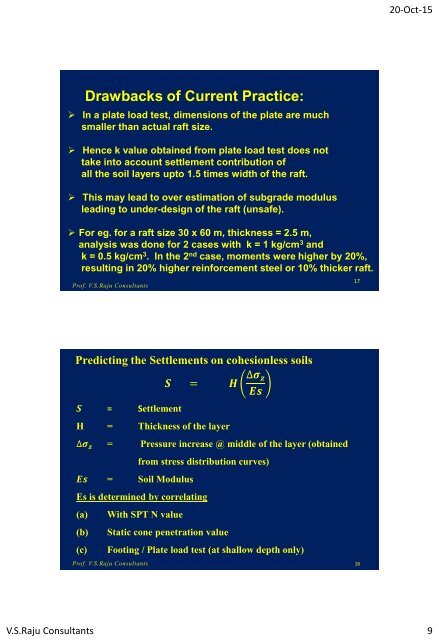Lec4_Piled Raft
You also want an ePaper? Increase the reach of your titles
YUMPU automatically turns print PDFs into web optimized ePapers that Google loves.
20-Oct-15<br />
Drawbacks of Current Practice:<br />
‣ In a plate load test, dimensions of the plate are much<br />
smaller than actual raft size.<br />
‣ Hence k value obtained from plate load test does not<br />
take into account settlement contribution of<br />
all the soil layers upto 1.5 times width of the raft.<br />
‣ This may lead to over estimation of subgrade modulus<br />
leading to under-design of the raft (unsafe).<br />
‣ For eg. for a raft size 30 x 60 m, thickness = 2.5 m,<br />
analysis was done for 2 cases with k = 1 kg/cm 3 and<br />
k = 0.5 kg/cm 3 . In the 2 nd case, moments were higher by 20%,<br />
resulting in 20% higher reinforcement steel or 10% thicker raft.<br />
Prof. V.S.Raju Consultants<br />
17<br />
Predicting the Settlements on cohesionless soils<br />
S = Settlement<br />
S = H ∆σ z<br />
Es<br />
H = Thickness of the layer<br />
∆σ z = Pressure increase @ middle of the layer (obtained<br />
Es = Soil Modulus<br />
from stress distribution curves)<br />
Es is determined by correlating<br />
(a)<br />
(b)<br />
(c)<br />
With SPT N value<br />
Static cone penetration value<br />
Footing / Plate load test (at shallow depth only)<br />
Prof. V.S.Raju Consultants 18<br />
V.S.Raju Consultants 9



